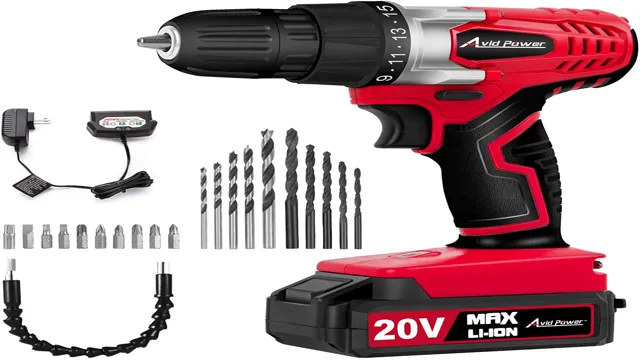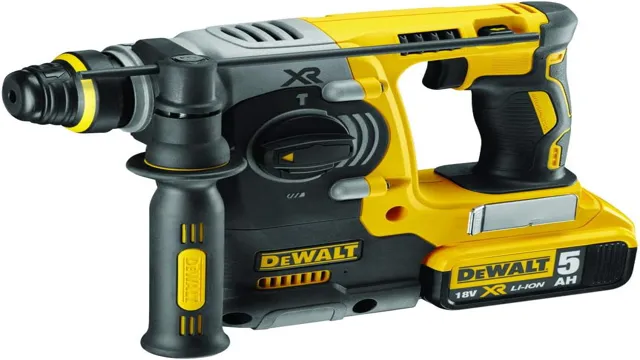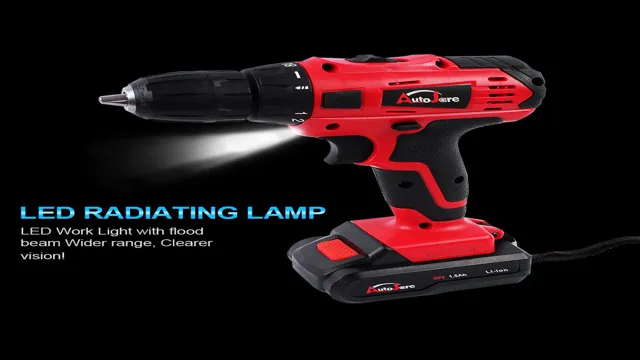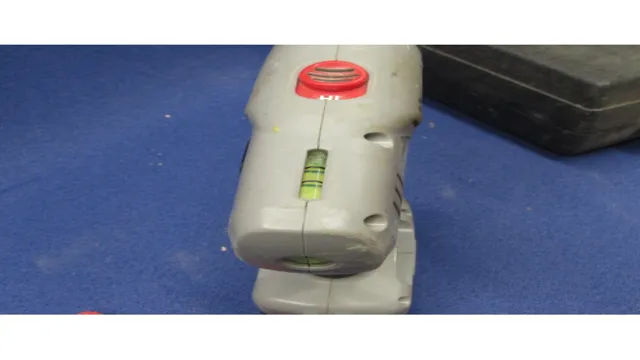How Long Does It Take to Charge a Cordless Drill? Top Tips for Fast Charging
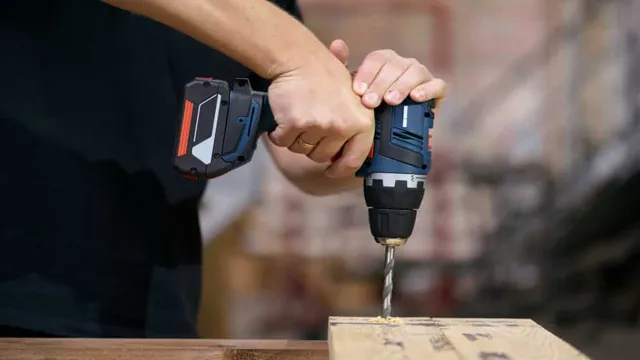
Have you just purchased a cordless drill? Or perhaps you’re in the market for one and want to know what you’re getting into. One of the most important things to consider when buying a cordless drill is how long it takes to charge the battery. After all, the last thing you want is to be in the middle of an important DIY project when your drill dies on you.
But fear not! In this blog, we’ll explore the factors that affect charging time, how long it typically takes to fully charge a cordless drill, and some tips to extend your battery’s life. So sit back, relax, and let’s dive in.
Understanding the Battery
If you’re wondering how long it takes to charge a cordless drill, the answer can vary depending on the type of battery it uses. Typically, most lithium-ion batteries found in cordless drills take anywhere from 30 minutes to several hours to fully charge. However, some models may take longer or shorter depending on their capacity and the charging method used.
It’s important to follow the manufacturer’s instructions for charging your drill’s battery to maintain its performance and prolong its lifespan. As a general rule, it’s a good idea to charge your battery before it is fully depleted to avoid damaging the cells and ensure you have enough power for your next project. Keeping your cordless drill’s battery charged and well-maintained will ensure that it’s always ready to tackle any job you have in mind.
Voltage and Capacity
When it comes to batteries, two key factors to consider are voltage and capacity. Voltage refers to the electrical potential difference between the positive and negative terminals of the battery, while capacity refers to the amount of energy that the battery can store and supply. Understanding these two concepts is crucial when choosing a battery for a specific application.
For example, if you need a battery to power a device that requires high voltage, then you will need to choose a battery that provides the necessary voltage level. On the other hand, if you need a battery to run a device for a long time without charging, then you will need to choose a battery with a high capacity. It’s important to keep these factors in mind when purchasing batteries to ensure that you choose the right one for your needs and avoid disappointment and potential damage.
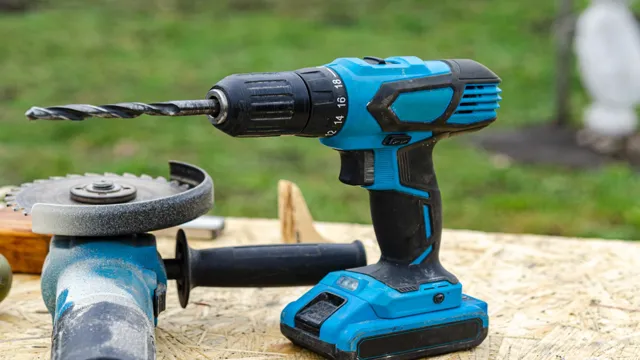
Battery Chemistry
Battery chemistry is a complex subject that underpins the entire function of batteries. In simple terms, a battery works by converting chemical energy into electrical energy, allowing it to power different devices and equipment. Understanding the basic concepts of battery chemistry is important as it can help us make informed decisions about the battery type that we choose to power our devices.
The main keyword, “Battery Chemistry,” encompasses the various chemical reactions that occur to sustain and generate power within a battery. Batteries use different types of chemicals to produce an electric charge, including lithium-ion, lead-acid, nickel-cadmium, and nickel-metal hydride. Comprehending these different types of batteries and the unique properties of each chemistry type can help users select a battery that is suitable for their specific needs.
So, it’s essential to consider the chemistry of the battery while purchasing it to make sure the technology matches our device’s power demands.
Factors that Affect Charging Time
How long it takes to charge a cordless drill depends on several factors. First and foremost, the type of battery the cordless drill has can impact charging time. Lithium-ion batteries, for example, tend to charge faster than NiCad batteries.
Additionally, the size of the battery also plays a role. A larger battery will take longer to charge than a smaller one. The charger itself also affects charging time.
Some chargers are designed to deliver a higher charging current, which can reduce charging time. However, using a charger other than the one that came with the drill can result in longer charging times. Finally, temperature can also impact charging time.
Cold temperatures can slow down the charging process, while warmer temperatures can speed it up. Overall, it’s important to consider all of these factors when determining how long it will take to charge a cordless drill.
Battery Capacity
Battery capacity plays a pivotal role in determining the charging time of your device. The larger the battery capacity, the longer it takes to charge. Often, smartphones with bigger batteries take longer to fully charge than those with smaller batteries.
Besides, a higher battery capacity requires a higher charging power to charge effectively. The charging time of your device is also influenced by the type of charger and the charging cable used. Using a charger with a higher wattage rating can help reduce charging time.
You May Also Love:
Similarly, using a charging cable that offers greater throughput can also improve charging time. Lastly, the current charge level of the battery directly affects the charging time. The less charge the battery has, the less time it takes to charge.
Overall, it’s crucial to understand the factors that affect charging time so that you can take steps to optimize the charging process and extend the longevity of your battery.
Charging Rate
When it comes to charging your electric vehicle (EV), the charging rate is a critical factor that ultimately determines how long it will take to get your vehicle fully charged. There are several key factors that can affect the charging time, including the battery capacity, the amount of power being supplied to the charging station, and the charging speed of the station itself. In general, the larger the battery capacity of your EV, the longer it will take to charge fully.
Meanwhile, the amount of power supplied to the charging station and the station’s charging speed can have a significant impact on the charging time. For example, if you are charging your EV at a station that can provide a high charging speed, it will take less time to reach a full charge compared to a station with a slower charging speed. Additionally, it’s essential to ensure that your EV’s battery is compatible with the charging station you plan to use to avoid damaging your battery or affecting the charging rate.
Ultimately, knowing the factors that affect charging time can help you plan your EV charging more effectively and efficiently.
Charger Efficiency
Charger Efficiency When it comes to charging time, there are a few factors that can affect the speed and overall efficiency of your charger. One of the most important factors is the output of your charger. Chargers with higher output will typically charge your device faster, assuming that your device can handle that level of input.
Another factor to consider is the capacity of your battery. A larger battery will take longer to charge than a smaller one, even with the same output charger. Temperature is another important factor.
Extreme heat or cold can slow down charging times and potentially damage your device. Finally, the type of cable you use can make a difference. A high-quality cable with a proper jack will ensure that the maximum amount of power is transferred between the charger and the device.
Keep these factors in mind when selecting a charger and you’ll ensure a speedy charge every time.
Average Charging Times
If you’re wondering how long it takes to charge a cordless drill, the answer depends on a few factors. First off, different drills have different battery capacities, so charging times can vary. On average, however, most cordless drills take around 1 to 2 hours to fully charge.
Of course, this can also depend on the type of charger you’re using and whether or not it’s a fast-charging model. It’s always a good idea to consult the manufacturer’s instructions for specific guidelines on charging times. Additionally, keep in mind that it’s important to let your battery cool down after using it before charging it up again, as overheating can damage the battery life.
Overall, while charging times for cordless drills may vary, a little bit of patience and proper care can help ensure your battery stays in good working order.
Fast Charging vs. Slow Charging
When it comes to charging your electronic devices, there are two types of charging speeds: fast charging and slow charging. The charging time for both of them can vary between devices, but on average, fast charging can take anywhere from 30 minutes to an hour, while slow charging can take up to three hours. Fast charging is ideal for when you’re in a hurry and need your device charged quickly, while slow charging is best for overnight charging or when you have several hours to spare.
However, it’s crucial to note that not all devices are compatible with fast charging, and using a fast charger on an unsupported device could potentially damage the battery. Thus, it’s always best to check the device’s manual to ensure its compatibility with fast charging.
Manufacturer Recommendations
When it comes to electric vehicle (EV) charging, it’s important to check with your vehicle’s manufacturer to ensure you’re following their recommended charging guidelines. The average charging time can vary depending on the make and model of your EV, as well as the type of charging station you’re using. For example, the Tesla Model S has a recommended charging time of 45 minutes using a Supercharger, while the Nissan Leaf typically takes 30 minutes using a CHAdeMO station.
It’s also important to note that charging times can vary based on the battery’s state of charge and environmental factors such as temperature. Overall, following manufacturer recommendations and considering factors such as charging station availability and your own driving habits can help optimize your EV charging experience.
Conclusion
In conclusion, the answer to how long it takes to charge a cordless drill isn’t as simple as one might think. It depends on various factors like the type of battery, the charger’s power output, and the current battery charge level. But no matter how long it takes, never fear – a fully charged cordless drill is a powerful tool in anyone’s hands, ready to tackle any DIY project with ease.
So be patient, let it charge, and voila! You’ll soon be ready to drill, baby, drill!”
FAQs
How long does it take to fully charge a cordless drill?
The charging time for a cordless drill varies depending on the model and battery capacity. On average, it takes around 1-2 hours to fully charge a cordless drill battery.
Can I use a cordless drill while it’s charging?
It is not recommended to use a cordless drill while it’s charging, as it may cause damage to the battery and affect its lifespan.
Can I leave my cordless drill battery charging overnight?
Yes, you can leave your cordless drill battery charging overnight, as most modern chargers have built-in safety features that prevent overcharging and overheating.
What happens if I overcharge my cordless drill battery?
Overcharging your cordless drill battery can cause damage to the battery and reduce its overall lifespan. It may also pose a safety risk, as it can lead to overheating and even explosions in extreme cases.
How do I know if my cordless drill battery is fully charged?
Most cordless drill batteries come with a charging indicator that shows the charging status. When the battery is fully charged, the indicator light will turn green or stop blinking.
Can I use a different charger to charge my cordless drill battery?
It is not recommended to use a different charger to charge your cordless drill battery, as it may result in damage to the battery and void the warranty.
How often should I charge my cordless drill battery?
It is recommended to charge your cordless drill battery after each use, or when the battery level drops below 20-30%. Over-discharging the battery may affect its performance and lifespan.

